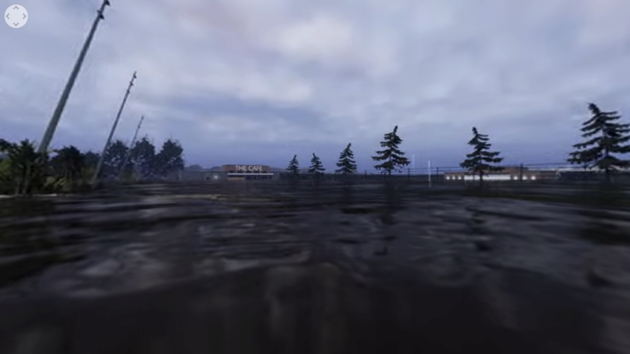Government Communications Service
|
|
How virtual reality is revolutionising coastal management
Blog posted by: Jan Murdoch, Technology Innovation Consultant, Defra Technology Innovation Team, 24 October 2024.
In the picturesque stretch of coastline from Pevensey Bay to Eastbourne, a quiet revolution is taking place. The Pevensey Bay to Eastbourne Coastal Management Scheme (PBECSM) is not just battling the rising tides, it’s harnessing technology to reshape how we prepare for climate change.
Imagine standing on a familiar street, watching as the sea level rises around you, transforming the landscape in ways that were once unimaginable. This is now possible through the innovative use of Virtual Reality (VR) technology.

The Environment Agency, in collaboration with the Department for Environment, Food & Rural Affairs (Defra) Technology Innovation (TI) team and VR specialists PixelMill, have created a groundbreaking VR experience that transports users into a simulation that gives viewers a stark view of the challenges we face with the predicted one metre sea level rise over the coming century. We will see sea defences being breached with increased frequency.
But why VR?
Traditional methods of communication may not always be able to convey the urgency of climate change. Graphs and statistics, while informative, can feel abstract and disconnected from our daily lives. VR bridges this gap, creating an experience that is both informative and emotionally impactful.
How it was done
The PBECSM team showcased this technology at an event hosted by the Coastal School Partnership (CSP), where members of the House of Lords Environment and Climate Change Committee were in attendance. The VR experience takes viewers on a journey through time, showing the coastal area before, during, and after a potential flood. It’s designed to be a fully realistic 360 degree experience, so buildings and props are used to illustrate the impact of rising water levels. Sound effects and a voiceover guide viewers through the experience, ensuring key messages are delivered effectively.
The response has been overwhelmingly positive. At Civil Service Live 2024, attendees were blown away by the immersive nature of the experience.
Colleagues from the Ministry of Housing Communities and Local Government (MHCLG) said, “A very immersive experience, it highlights the impact of water levels rising much more than any other format I’ve seen.”
The Department for Energy Security and New Zero (DESNZ) echoed this sentiment, calling it “an incredible way to apply VR” that could be applied to many cross-government projects.
This initiative is changing perspectives and driving home the reality of climate change in a way that resonates on a personal level. As colleagues from the Driver and Vehicle Standards Agency (DVSA) put it, it’s “Money well spent!” and in the words of the Government Office for Science, “This was a great way to get engagement with the public and it’s such an innovative idea!”
Simulation demonstrating the damage of coastal flooding in virtual reality.
You can watch this simulation in action in this video on YouTube.
What’s next?
The team is building on its success. It’s now exploring Mixed Reality (MR) visualisations for various flood energy management systems and the potential of developing a ‘Digital Twin’ solution to model the impacts of different flood alleviation options. Defra’s use of VR is a glimpse into a future where technology doesn’t just help us understand our changing world, but empowers us to change it for the better.
Glossary of terms:
Virtual Reality (VR)Virtual reality is a technology that creates lifelike, computer-generated environments through a wearable headset. Users can experience and interact with these virtual worlds as if they were real.
Mixed Reality (MR): Mixed reality blends digital content with the real world, allowing users to interact with both virtual and physical elements simultaneously.
Related content
Original article link: https://gcs.civilservice.gov.uk/blog/how-virtual-reality-is-revolutionising-coastal-management/


